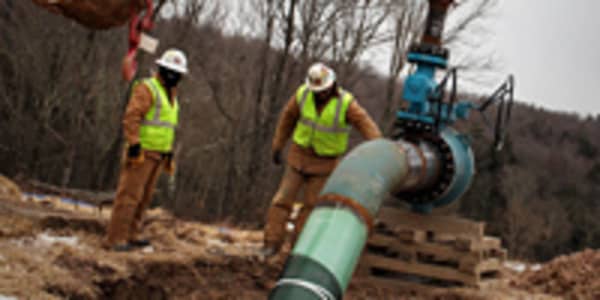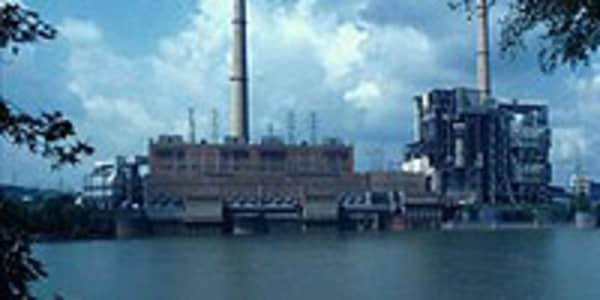Inside The World of Fracking
Hydraulic fracturing, or fracking, forces natural gas and crude oil out of shale buried deep below the earth by using highly pressurized and treated water.
The idea of fracking dates to the 1860s. But modern fracking really started in 1947, and with technological advancements in the past 15 years, it’s become a standard industry method to access natural gas in particular.
While many industry analysts argue that fracking is a safe and efficient way to tap a bountiful energy source, environmentalists and community groups say it is a dangerous and destructive technology, whose economic benefit is not worth the damage to the environment.
There’s been no conclusive evidence that chemical-laden waste water from the process is contaminating ground water, but several environmental groups point to anecdotal evidence that it has. A report released by Senate Democratsin 2011 accused drillers of knowingly using toxic chemicals in the process.
To help solve the issue, an Environmental Protection Agency study on the full impact of fracking, commissioned by Congress, is expected by the end of 2012.
One thing that might be agreed on is that few Americans know much about fracking or where it’s taking place. So we’ve put together a short guide to the process, with some insights from John Duda, director of the DOE’s National Energy Technology Laboratory’s Strategic Centerfor Natural Gas and Oil.
(Data are from the U.S. Department of Energy,which is actively involved in advancing hydraulic fracturing technology.)
By Mark Koba
Posted 20 June 2012
Evolution of Shale Gas
Some 400 million years ago, thick shale deposits were forming as fine silt and clay particles at the bottom of bodies of water.
As plants and primitive animals died off, some of the methane gas created from the organic matter got buried with the sediments and seeped into sandy rock layers next to the shale rock, forming pockets of natural gas.
Some of that gas has remained locked in the shale layer, making it hard to bring up to the surface with traditional drilling. To access that gas, fracking has been used.
The Well
Once a location has been selected for drilling, some from 4 to 6 acres of surface area will be leveled and cleared for drilling. The work site includes space for drilling equipment, a pit for drilling waste and an area for the massive amount of water to be used.
“It’s important to note that hydraulic fracturing is different that drilling,” says Duda. “The drilling comes first and then the fracking.”
Wells are drilled straight down to depths ranging from 6,000 feet to more than 14,000 feet, cutting through dozens of geological layers, including pockets of drinking water. The wellbore that’s drilled has steel casing and cement to contain water and chemicals designed to protect those drinking wells and other areas from contamination.
Drilling Process
After drilling vertically, monitoring devices above ground will indicate a “kick off point.” This is where the drilling will turn horizontal because the wellbore has reached the shale, which can be hundreds of feet thick.
There may be some natural fractures present in the shale to access the gas into the wellbore but more than likely the wellbore will be subdivided into several sections, each 3,000 feet to 5,000 feet. There can be as many as 10 separate sections in the wellbore.
“At this point, the shale needs to be ‘stimulated’ to release the gas,” says Duda. “The segments will first be lined with metal casings before the well is hydraulically fractured with the liquid.”
Fracturing Begins
Beginning at the toe, or the end, of the wellbore, the casing in the sections is punctured when high pulse electrical charges are sent through a wire in the wellbore. Then the liquid is pumped in from above ground under high pressure —thousands of pounds per square inch — to crack the shale and create fractures.
The liquid is mostly water mixed with sand, but there are dozens and sometimes hundreds of chemicals in the mixture. Some chemicals are used to help dissolve rocks and sediments while others are used for eliminating bacteria in the water. Chemicals are also used to control temperature and reduce friction in the wellbore.
Usually the ratio is 98 percent to 99.5 percent water and sand to 0.05 percent chemicals.
The pumping of the liquid into the wellbore can happen many times in order to access the gas. Up to 10 million gallons of liquid can be pumped into a well during the time it takes to remove the gas from the shale.
The fractures created are small, maybe only a fraction of an inch wide. The sand is what holds them open.
“The gas will flow around the sand and into the wellbore,” Duda says. “And then it flows back to the top.”
Extraction Stage
Both the liquid and the gas are pumped back to the surface where they are separated by machinery at the well site. The gas is then trucked to a central collection point for more cleaning to make it pure. It then goes to a power transmission company, which would then sell it to a distribution company for use by business and consumers.
But only about 10 percent to 20 percent of the liquid flows back to the top. The rest remains below.
Regulations on the treatment, as well as the disclosure on the chemicals used, vary from state to state, but the water that’s resurfaced has to be collected and "cleaned up" through a treatment process before it can be released or reused for more fracking. Drillers can also inject the leftover water into disposal wells thousands of feet underground.
“It’s not that difficult to separate the water from the gas,” says Duda.
The wells themselves can function for years. Some current wells have been producing gas for 50 years, according to Duda.
The Cost of Fracking
A 2011 study by the University of Pittsburghfound that the average cost of developing a well that utilized hydraulic fracturing in Pennsylvania’s Marcellus Shale was about $7.6 million in direct costs — compared with $4 million to $5 million for more traditional wells.
“These shales are unique, and not every one of them will deliver to expectations,” Duda says. “What Mother Nature gives us will vary.”
The cost is not discouraging natural gas companies, largely because there’s little gas available through traditional drilling methods.
The worldwide market for hydraulic fracturing is expected to expand 19 percent in 2012 to a record $37 billion, according to a report by Spears & Associates.In North America, which accounted for 87 percent of the fracking market last year, spending on the technique used to extract oil and natural gas from shale will top $30 billion this year.
Almost 19,000 new wells will be fracked in the U.S., compared with 16,000 in 2011. Halliburton is the largest U.S. fracking services provider with 18 percent of the market, according to the Pittsburgh study.
Fracking in the U.S.
Fracking happens across much of the U.S., in states such as North Dakota, Arkansas, Texas, California, Colorado, New Mexico and Pennsylvania. One state, Vermont, recently banned the practice, though it doesn’t have an active well being drilled.
The map shows where fracking is taking place. Pennsylvania, home to the Marcellus field, has more active wells than any other state.
Fracking Around the World
Fracking is currently done in many countries like the U.S., Canada and Brazil while others like France and Belgium, have banned the practice.
Here is a map showing locations around the world that are estimated to have large deposits of natural gas that could employ fracking, if it's not in use already.
Outlook for Shale Gas Fracking
The U.S. Energy Information Administration, EIA, projects there are 827 trillion cubic feet of natural gas, or reserves, recoverable in the U.S. using the fracking process. According to the EIA, that represents about 36 years of current consumption. A previous estimate put it at 100 years. Other estimates put reserves somewhere in between.
The EIA says that the shale gas share of U.S. natural gas production will continue to grow, reaching 45 percent of the total volume of gas produced by 2035. Currently, it’s about one quarter.





